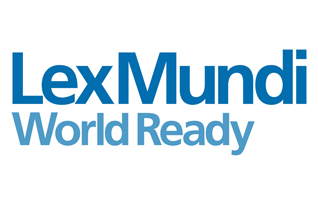It was a little over two years ago when I sat with Carl Terzian at his usual table at the Luxe Sunset Boulevard Hotel in Los Angeles.
It was an exciting moment for me, as I’d followed Terzian, a public relations and crisis management icon, for many years. Terzian was an ambassador under the Eisenhower administration who would go on to work with more than 5,000 clients!
Our common threads were obvious. I had spent more than two decades as a legal marketing consultant, specializing in business strategies such as law firm succession planning. Terzian, one of the first PR experts to market law firms, had built a tremendous brand with Carl Terzian Associates, but he was now in his late 70s and was overdue to start planning how his brand could and should live on, which would have created millions of dollars in revenue for his wife Joan, and children Jim and Charlotte, long after his retirement and death.
These days, once any brand has value, its owners come up with a plan to sustain that value long after the partnership dissolves, the band breaks up, or the colonel dies. If it made sense for anyone in PR to have a succession plan and capitalize on that branding success, it was Terzian, who, according to the Los Angeles Times, had an “ever-growing Rolodex of about 16,000 names” and was putting on 800 events each year that facilitated about $2 billion in business annually.
I told Terzian that I looked up to him as the grandfather of networking in Southern California, and that it was time for him to think about what kind of legacy he wanted to leave and what trajectory his business should take upon his retirement or death. I noted that we had connected through a mutual friend who felt that Terzian needed my help building a succession plan.
At this juncture, Terzian had a tremendous opportunity to create a Carl Terzian 2.0 that would extend his services to a whole new crop of professionals, Gen-Xers and Millennials who were hungry to build their own practices and build relationships that lead to business. Terzian’s brand was so strong, I argued, that if he didn’t have someone else in mind to take over his business, I’d happily buy it from him!
Terzian was gracious. He insisted on paying the bill, even though he didn’t eat. He offered to help do PR for me in the new business venture I was forming.
However, he expressed no interest in my doing succession planning for him. My assumption was that Carl was simply an old school kind of guy who was fine with being buried along with the brand — although I can’t say for sure, because he refused to get any deeper into that part of the conversation.
Sadly, it wasn’t too long after that meeting that Terzian started suffering serious health problems from which he would not recover. After he died on March 19 from a massive stroke at age 80, his firm announced it was closing its doors forever, effective March 31. All of the service information has now been gutted from the firm’s website.
It was a sad ending and also ironic in that Terzian taught people the value of building their network to build their business — yet he rejected the opportunity to allow the tremendous business he had built over 45 years to continue in a way that would have benefited his employees, his family and the community, including the 50 or so nonprofits in the Los Angeles area who had named him man of the year. In that sense, it was like the cobbler whose son doesn’t have shoes.
Unfortunately, this is an all-too-common problem. A “law firms in transition” study last year byAltman Weil noted that, in 63 percent of law firms, partners aged 60 or older control at least one quarter of total firm revenue — but only 31 percent of law firms have a formal succession plan. The study concluded that many such service firms have five years to figure out a succession plan, or they will be out of business.
To those law firms swamped with court dates and deadlines, this may seem like the kind of thing to put on the back burner until something major happens, such as the passing of a senior partner. But the best decisions are not made when you are forced to make them, so why allow a decision as important as the future of the firm to be approached in anything other than the most careful and thoughtful manner?
Here are five succession-planning concepts that law firms and other businesses can start doing or thinking about now:
- Identify the rising stars in the firm and provide them with professional development — business coaching and training. This will also help identify which rising stars have the potential to bring in new business and be rainmakers;
- Start transitioning leadership positions down to the Gen-Xers and Millennials. If they’re not ready, you need to go to a co-chair model in which the senior partner shows the younger professional the ropes;
- Senior attorneys can include younger attorneys on business pitches and client interactions. This way, if something happens to a senior attorney, the bases are covered because the relationship with the client is deeper than one person;
- Sometimes, firms hesitate to provide business development training or public relations support to younger attorneys out of a concern that this will increase the chance that competing firms might poach them. Although this is sometimes possible, it’s not a good enough excuse for holding back the development of your next generation, depriving them of the very skills that will strengthen your firm;
- Conversely, I’m starting to see clients use their internal professional development programs as a recruiting tool. If you can show a lateral that you will invest in them to make them better and create opportunities for advancement, that can be a tremendous recruiting differentiator.
Lastly, we tell our law firm clients that they need a succession plan not only for the sake of securing the firm’s future, but also out of their obligation to ensure that an unfortunate setback won’t cripple the firm’s ability to continue business. As wonderful as it would have been for Terzian to have created a way to continue his mission once he was no longer in the driver’s seat, law firms have a much greater obligation to do those things that will keep the business of the firm moving forward despite all obstacles.
This article was originally published by Law360.

















